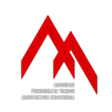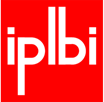Karakter Spasial Ruang Publik sebagai Tempat Ketiga Studi Kasus: Pasar Seni dan Wisata Gabusan
DOI:
https://doi.org/10.21776/ub.ruas.2022.020.01.10Keywords:
third place, art market, public spaceAbstract
Â
The third place is a place to unwind, apart from home as the first place and the office as the second place. The third place is one type of public space. Gabusan Art and Tourism Market (PSWG) is a place for art accommodation in Bantul Regency, Yogyakarta. However, in recent years, the situation of PSWG as a public space has declined and is getting worse. It is necessary to conduct research related to the character of the third place as a public space. This qualitative, grounded theory research method uses primary sources: observations and interviews, and secondary sources: literature studies with the third-place theory from Ray Oldenburg. The research variable is that the third-place functions as a public space, a social space and own good accesibility. The stages of the research process starting from secondary data processing, namely literature studies, then primary data processing, namely observations and interviews of activity actors. The research results show that PSWG as a public space is sufficient, but as a third-place it is lacking in terms of social activities and accessibility
References
Alzahrani, A. (2022). Evaluating Quality and Spatial performance of Urban Open Spaces by Spaceshaper: The Case of Al-Baha. Al-Baha University Journal of Basic and Applied Sciences (BUJBAS), 6(1), 7–16. https://bu.edu.sa/web/jbas/vol.6-iss1
Brontowiyono, W. (2016). BALANCE OF GREEN OPEN SPACE TO SUPPORT GREEN SETTLEMENT IN YOGYAKARTA URBAN AREA. Jurnal Sains Dan Teknologi Lingkungan, Volume 8(nomor 2), 68–79.
Carmona, M. (2019). Principles for public space design, planning to do better. URBAN DESIGN International, 24, 47–59. https://doi.org/https://doi.org/10.1057/s41289-018-0070-3
Damayanti, R. (2019). Strategi Branding Dinas Perdagangan Kabupaten Bantul dalam Upaya Pengembangan Pasar Seni Gabusan (PSG) [Universitas Ahmad Dahlan]. http://eprints.uad.ac.id/16069/2/Naskah Publikasi %281%29.pdf
Elshater, A. (2018). What can the urban designer do for children? Normative principles of child–friendly communities for responsive third places. Journal of Urban Design, 23(3), 432–455. https://doi.org/10.1080/13574809.2017.1343086
Groat, Linda N., Wang, D. (2013). Architectural Research Method (Second Edi). John Wiley & Sons, Inc.
Habibah, A., & Margono, D. S. A. (2014). KEGAGALAN PENGELOLAAN PASAR SENI GABUSAN [Universitas Gadjah Mada]. http://etd.repository.ugm.ac.id/penelitian/detail/67226
Halim, O. W. (2019). Kajian Aktivitas Pasar Sebagai Ruang Publik pada Perumahan Terencana (Studi Kasus: Perumahan Deli Indah Medan) [UNIVERSITAS SUMATERA UTARA]. https://repositori.usu.ac.id/handle/123456789/23962
Jasmine, B., & Kusuma, H. (2019). Tipologi Taman-Taman Kota berdasarkan Sense of Place Pengunjung. Jurnal RUAS, 17(2), 1–12. https://ruas.ub.ac.id/index.php/ruas/article/view/272/242
Jessica Finlaya, Espositoa, M., Kima, M. H., Gomez-Lopeza, I., & Philippa Clarkea. (2019). Closure of ‘Third Places’? Exploring Potential Consequences for Collective Health and Wellbeing. Health Place, 176(1), 139–148. https://doi.org/10.1016/j.healthplace.2019.102225.
Laksita, I. N., & Marcillia, S. R. (2020). Physical Elements of Accessibility for Wayfinding in an Information Deficit Tourism Area. Nature, 7(2), 143–152. https://doi.org/https://doi.org/10.24252/nature.v7i2a1
Mehta, V. (2013). The Street A Quintessential Social Public Space. Routledge.
Mousavi, S., & Rashtian, S. M. (2016). Investigating the Strategies To Increase Social Interactions With Social Sustainability Approach (Case Study: the Street of Chahar Bagh in Esfahan). The Turkish Online Journal of Design, Art and Communication, 6(AGSE), 2019–2030. https://doi.org/10.7456/1060agse/080
Oldenburg, R. (1997). The Great Good Places (2nd ed.). Da Capo Press.
Pancholi, S., Yigitcanlar, T., & Guaralda, M. (2018). Societal integration that matters: Place making experience of Macquarie Park Innovation District, Sydney. City, Culture and Society, 13, 13–21. https://doi.org/10.1016/j.ccs.2017.09.004
Peters, K., & Lee, D. (2020). Ensuring Inclusive And Accessible Public Spaces In An Austerity Context. In Unfolding Dilemmas Of Urban Public Spaces. In Unfolding Dilemmas Of Urban Public Spaces (p. 81). Urban Europe. https://jpi-urbaneurope.eu/wp-content/uploads/2020/10/AGORA_PublicSpaces_PolicyPaper_Online.pdf
Phetburi, W., & ChodChuang, S. (2021). A Study of the Relationship of Physical Environment to Third Place in Central Festival Hat Yai Shopping Center, Songkhla Province. Business Review Journal, 13(255–269). https://so01.tci-thaijo.org/index.php/bahcuojs/article/view/241692
PPS. (2016). Project for Public Space. You Asked, We Answered: 6 Examples of What Makes a Great Public Space. https://www.pps.org/article/you-asked-we-answered-6-examples-of-what-makes-a-great-public-space
Pramitasari, D. H. D. (2018). Aspek Perilaku Manusia sebagai Makhluk Individu dan Sosial Pada Ruang Terbuka Publik. Nature, 5(2), 85–93. https://doi.org/https://doi.org/10.24252/nature.v5i2a1
Riemasti, M., & Kristiadi, D. (2017). Revitalisasi Kawasan Pasar Seni Gabusan dengan Konsep Ruang Kreatif [Universitas Gadjah Mada]. In 2017. http://etd.repository.ugm.ac.id/penelitian/detail/113434
Sekarlangit, N. (2019). Keterkaitan Desain Ruang Publik Dengan Perilaku Pengunjung Mal di Yogyakarta (Kasus: Ambarrukmo Plaza dan Galeria Mall). Jurnal RUAS, 17(2), 41–49. https://doi.org/http://dx.doi.org/10.21776/ub.ruas.2019.017.02.4
T.A.K, A. A. A. R., Pudianti, A., & Vitasurya, V. R. (2021). Revitalisasi Pasar Seni dan Wisata Gabusan. Jurnal Terapan Abdimas, 6(2), 175–191. https://doi.org/http://doi.org/10.25273/jta.v6i2.9181
Vaux, D. (2018). Interior People Places: The Impact of The Built Environment on The Third Place Experience. In J. A. A. Thompson & N. Blossom (Eds.), The Handbook of Interior Design (p. 347). Wiley Blackwell. https://bit.ly/3y5jVoG
Wexler, M. N., & Oberlander, J. (2017). The Shifting Discourse on Third Places: Ideological Implications. Journal of Ideology, 38(1). https://scholarcommons.sc.edu/ji/vol38/iss1/4/
Downloads
Published
How to Cite
Issue
Section
License
Authors who publish with this journal agree to the following terms:
- Authors retain copyright and grant the journal right of first publication with the work simultaneously licensed under a Creative Commons Attribution License that allows others to share the work with an acknowledgement of the work's authorship and initial publication in this journal.
- Authors are able to enter into separate, additional contractual arrangements for the non-exclusive distribution of the journal's published version of the work (e.g., post it to an institutional repository or publish it in a book), with an acknowledgement of its initial publication in this journal.
- Authors are permitted and encouraged to post their work online (e.g., in institutional repositories or on their website) prior to and during the submission process, as it can lead to productive exchanges, as well as earlier and greater citation of published work (See The Effect of Open Access).












